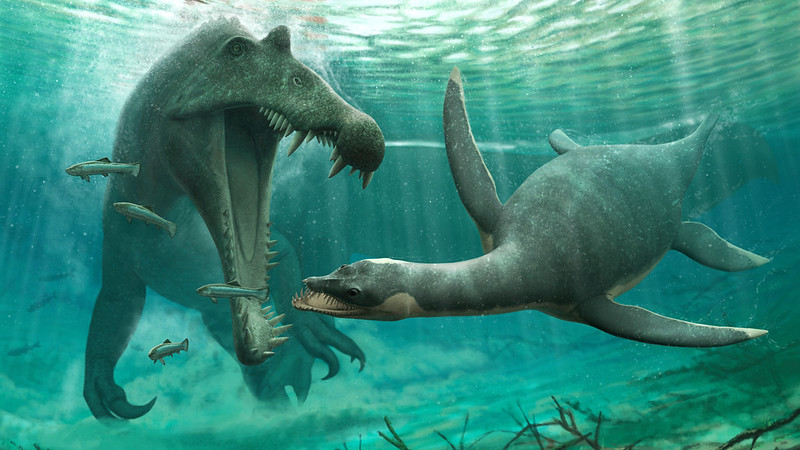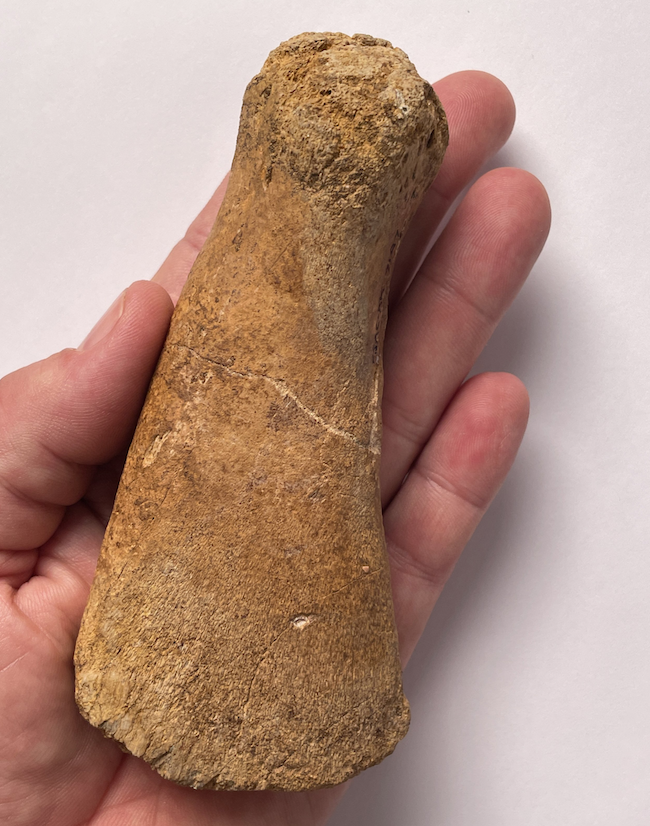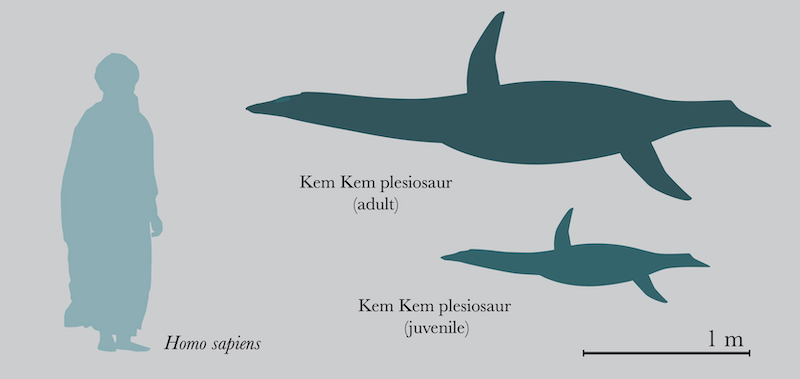
Freshwater plesiosaur fossils
Millions of years ago, dinosaurs ruled the land! And some ruled the oceans, too, including the plesiosaurs, marine reptiles famous for their long necks and four large flippers. Plesiosaurs were thought to live exclusively in the oceans. But on July 28, 2022, an international team of researchers announced their finding of plesiosaur fossils in the beds of ancient freshwater rivers, in what’s now Morocco.
Furthermore, the finding sheds light on other sorts of marine creatures – including whales and dolphins – that can live in fresh water. And it sparked a short flurry of viral headlines regarding Nessie, aka the legendary Loch Ness Monster in Scotland. More about that below.
The scientists who studied the freshwater plesiosaur fossils are from the University of Bath and University of Portsmouth in the UK, and Université Hassan II in Morocco. Subsequently, they detailed their unexpected findings in the peer review journal Cretaceous Research on July 21.
So … could the Loch Ness Monster be a freshwater plesiosaur?
It’s not likely.
But the discovery of freshwater plesiosaur fossils sparked headlines suggesting it could, late last week. Of course, the Loch Ness Monster is a legendary creature, supposedly inhabiting Loch Ness, a large freshwater lake near Inverness, Scotland. Plus stories of the Loch Ness Monster go back to the 6th century, at least. And people sometimes still report sightings of Nessie.
Yet it is one of the more famous modern theories that a species of plesiosaur still lives in the lake. Hence, it’s a popular idea, especially given many of the claimed “descriptions” from people who say they’ve seen the monster. That’s because, they often describe a long neck, small head and four flippers.
So could Nessie be a freshwater plesiosaur? Motherboard at Vice emailed Nick Longrich, looking for answers. Longrich is a paleontologist at the University of Bath and the senior author of the study, and he said in an email back to Motherboard that the Loch Ness Monster is certainly “fun to think about.”
Could extinct plesiosaurs still be living today?
But he said that the last plesiosaurs are thought to have gone extinct around the same time the dinosaurs did, about 66 million years ago. And that’s a far cry from the 14 or 15 centuries (that we know about) in which people have been reporting a “monster” in Loch Ness.
So the odds of a freshwater plesiosaur living today in the Scottish lake are low. Longrich told Motherboard:
The existence of freshwater plesiosaurs removes one major obstacle—could a marine lineage survive in a freshwater loch? Yes! But you still have all these other obstacles to overcome.
By the way, one of the major obstacles is the size of Loch Ness itself. Longrich told Motherboard it’s “doubtful” a population of Plesiosaurs could survive in such a small lake:
It’s 22 square miles in area. The only lake with a marine mammal today is Lake Baikal, which is home to the Baikal Seal. It’s 12,000 square miles, over 500 times as big as Loch Ness. You just need a large area to hold a viable population of animals as big as a plesiosaur. And Loch Ness probably couldn’t hold more than a few plesiosaurs.
Read more from Nick Longrich, via Motherboard and Vice
Here’s what they did find
The researchers discovered the fossils of small plesiosaurs, called leptocleididae plesiosaurs, in the fluvial deposits of a 100-million year old river system in the Kem Kem Group in eastern Morocco.
Also, the strata in that geological formation dates back to the Cenomanian stage of the Late Cretaceous period. Now, that once-flowing river is part of the Sahara Desert.
Plus, the discovery includes shed teeth and vertebrae from the neck, back and tail of three-meter long adults. And it includes an arm bone from a 1.5-meter long baby. Those bones and teeth tell scientists a lot about what the plesiosaurs used to be like. Nick Longrich said in his blog:
It’s scrappy stuff, but isolated bones actually tell us a lot about ancient ecosystems and animals in them. They’re so much more common than skeletons, they give you more information to work with. The bones and teeth were found scattered and in different localities, not as a skeleton.
So each bone and each tooth is a different animal. We have over a dozen animals in this collection.



Was the river their permanent home?
The teeth, significantly, show signs of heavy wear, similar to the fish-eating dinosaur Spinosaurus. And fossils of Spinosaurus have been found in the same ancient riverbeds, too. The worn teeth show that the plesiosaurs ate the same armoured fish that Spinosaurus did. That, in turn, suggests the plesiosaurs spent much of their time in the river. The number of plesiosaur fossils also indicates that they didn’t just go to the river to feed, as whales and dolphins do, but that they actually lived there.
Plesiosaurs might even have lived in that river permanently, much as modern-day river dolphins live in fresh water. They could have done so, given their smaller size than other marine plesiosaurs. The scientists said that these plesiosaurs likely could have tolerated both salt water oceans and freshwater rivers. In our modern world, Beluga whales can do the same.
Other marine animals have been known to “invade” and adapt to fresh water as well. According to Longrich:
We don’t really know why the plesiosaurs are in freshwater. It’s a bit controversial, but who’s to say that because we paleontologists have always called them ‘marine reptiles’, they had to live in the sea? Lots of marine lineages invaded freshwater.
For example, freshwater dolphins evolved and adapted in the Ganges River, the Yangtze River and twice in the Amazon Rainforest. There is even a freshwater seal in Lake Baikal, in Siberia.

Plesiosaurs were diverse and adaptable
The first plesiosaur fossils were found in 1823 by fossil hunter Mary Anning. Plesiosaurs are known to have survived for over 100 million years. And they were a diverse group of aquatic reptiles. Therefore, they were able to adapt to various environments, and the new discovery suggests that they were even more adaptable than first thought. So, just how adaptable were they? The paper’s authors commented, saying:
We don’t really know, honestly. That’s how paleontology works. People ask, how can paleontologists know anything for certain about the lives of animals that went extinct millions of years ago? The reality is, we can’t always. All we can do is make educated guesses based on the information we have. We’ll find more fossils. Maybe they’ll confirm those guesses. Maybe not.
The new plesiosaur fossils belong to the leptocleididae family. They were small plesiosaurs often found in brackish or freshwater including in England, Africa and Australia.
In fact, the fossils provide valuable clues about how these creatures lived. At first, the researchers only had a single bone, but that quickly changed. Former University of Bath student Georgina Bunker (now at Cardiff University) led the new study. As she noted:
It’s been really interesting to see the direction this project has gone in.

Latest of many discoveries
Samir Zouhri also commented on how the discovery expands the diversity of Morocco’s Cretaceous period:
This is another sensational discovery that adds to the many discoveries we have made in the Kem Kem over the past fifteen years of work in this region of Morocco. Kem Kem was truly an incredible biodiversity hotspot in the Cretaceous.
Also, the plesiosaurs would have co-existed with other carnivores, like Spinosaurus, as well as frogs, crocodiles and turtles. Co-author Dave Martill added:
What amazes me is that the ancient Moroccan river contained so many carnivores all living alongside each other. This was no place to go for a swim.
Bottom line: Scientists have discovered the 1st freshwater plesiosaur fossils, in an ancient riverbed in Morocco. The discovery sparked headlines about the Loch Ness Monster in the Scottish Highlands.
Read more about the plesiosaur fossil discovery in Longrich’s blog











